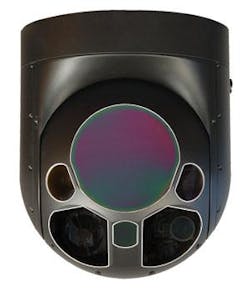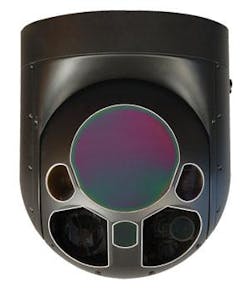By John McHale
WASHINGTON—Officials at FLIR Government Systems in Portland, Ore., announced several contracts for their electro-optic and infrared systems at this year’s Association of the U.S. Army (AUSA) Annual Meeting in October.
One of them was a $28.6 million order from the United Arab Emirates (UAE) for its Star SAFIRE III stabilized, multi-sensor systems. The units delivered under this order are for homeland security and high-value asset protection missions. Leveraging its local support capabilities, FLIR’s Star SAFIRE III was chosen for its technical and environmental qualifications for the harsh desert climate of the UAE, company officials say.
Work will be at FLIR’s facilities in Portland, Ore. Deliveries will begin in 2008 and extend into 2009.
“This contract, representing an international expansion of our market opportunity for homeland security applications, strengthens our presence in the region, says Earl R. Lewis, president and chief executive officer of FLIR Systems Inc.
The U.S. Army Space and Missile Defense Command in Huntsville, Ala., also placed a $22.9 million order for the Star SAFIRE III stabilized multi-sensor systems. This represents the first delivery order under a newly awarded $77.9 million indefinite delivery, indefinite quantity contract. The units delivered under this contract will support ongoing U.S. Army and U.S. Marine Corps programs. Work on the delivery order will begin immediately and be performed in FLIR’s Portland production facility.
FLIR engineers have sealed the Star SAFIRE LV against blowing sand and dust as well as driving rain. The LV is proven to withstand conditions beyond MIL-spec and has operated on the Southwest Asian battlefields for over 13,500 hours, company officials say.
When equipped with the internal GPS/IMU navigation sub-system, the Star SAFIRE LV can determine and display target geolocation, which can then be transmitted to allied units (via data, video, or voice uplink) for intelligence assessment and/or direct action. By overlaying video from the thermal and low-light imagers, system operators can maintain greater situational awareness, gather more information about their surroundings, and react to potential threats before they become active threats.
FLIR engineers also introduced the high-performance, detachable thermal sight (HISS) at AUSA called the HISS. It is a detachable sniper scope for use with a wide variety of military sniper weapons and their standard optical pcopes (up to 15X).
HISS provides operational capability in all light levels and works in-line with the day sniper scope, serving as its eyepiece. Additionally, HISS can be detached and reattached to the sniper weapon without loosing the bore sight of the day scope, improving operator performance and tactical flexibility, FLIR officials say. It weighs less than four pounds, and will operate for over seven hours using standard CR-123A batteries.




